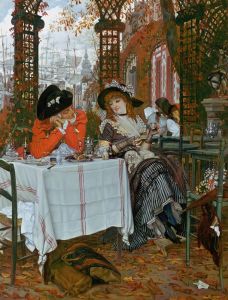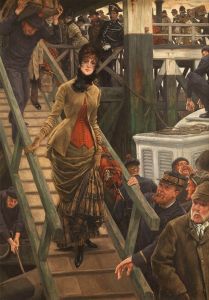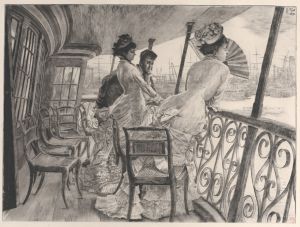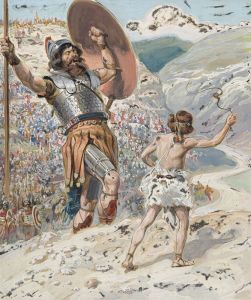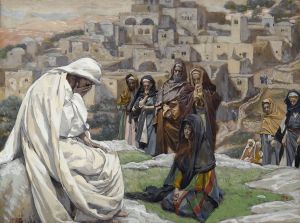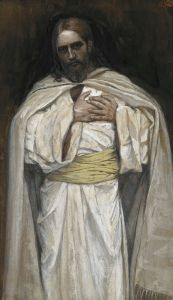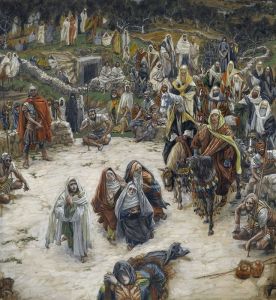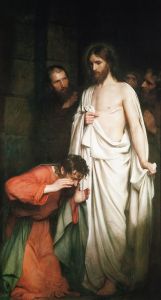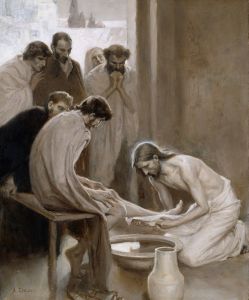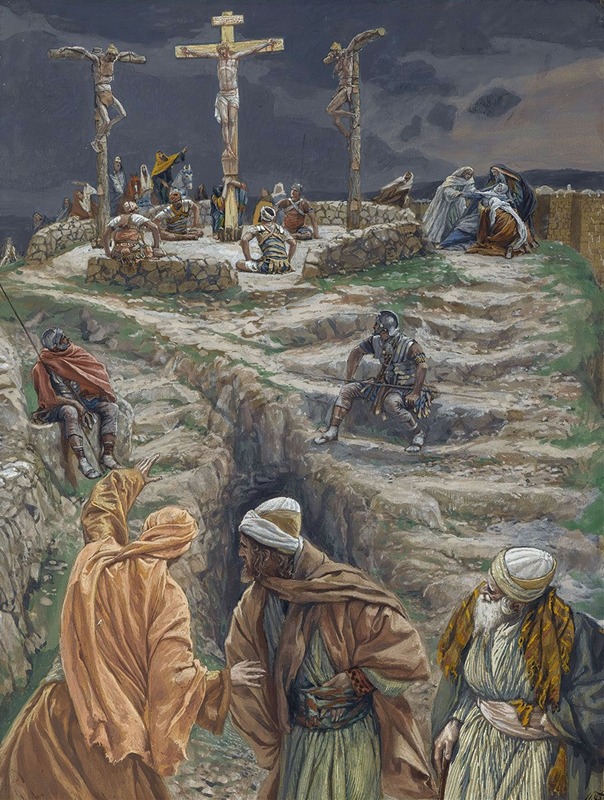
My God, My God, why hast thou forsaken me
A hand-painted replica of James Tissot’s masterpiece My God, My God, why hast thou forsaken me, meticulously crafted by professional artists to capture the true essence of the original. Each piece is created with museum-quality canvas and rare mineral pigments, carefully painted by experienced artists with delicate brushstrokes and rich, layered colors to perfectly recreate the texture of the original artwork. Unlike machine-printed reproductions, this hand-painted version brings the painting to life, infused with the artist’s emotions and skill in every stroke. Whether for personal collection or home decoration, it instantly elevates the artistic atmosphere of any space.
James Tissot's painting "My God, My God, why hast thou forsaken me?" is a significant work within his series "The Life of Christ," which he created during the late 19th century. Tissot, a French painter and illustrator, is renowned for his detailed and evocative biblical scenes, which reflect his deep interest in the life and times of Jesus Christ. This particular painting is part of a larger collection that Tissot worked on after experiencing a religious awakening in the 1880s.
The painting depicts one of the most poignant moments from the New Testament, specifically from the Gospels of Matthew and Mark, where Jesus, during his crucifixion, cries out to God in a moment of profound anguish. The phrase "My God, my God, why hast thou forsaken me?" is a direct quotation from Psalm 22, which Jesus is said to have recited while on the cross. This moment is often interpreted as a reflection of Jesus' human suffering and his sense of abandonment at that critical juncture.
Tissot's approach to this scene is characterized by his meticulous attention to historical and cultural details. He traveled extensively to the Middle East to gather accurate information about the landscapes, architecture, and attire of the period, which he then incorporated into his paintings. This dedication to authenticity is evident in the way he portrays the setting and figures in "My God, My God, why hast thou forsaken me?" The painting captures the somber and desolate atmosphere of the crucifixion, with a focus on the emotional intensity of the moment.
The composition of the painting is carefully constructed to draw the viewer's attention to the central figure of Jesus on the cross. Tissot uses light and shadow effectively to highlight Jesus' expression and posture, conveying a sense of vulnerability and despair. The surrounding figures, including Roman soldiers and onlookers, are depicted with a sense of realism that adds to the overall impact of the scene. Tissot's use of color and texture further enhances the emotional depth of the painting, creating a powerful visual narrative.
"My God, My God, why hast thou forsaken me?" is part of Tissot's larger body of work, which includes over 350 watercolors illustrating the life of Christ. This ambitious project occupied Tissot for over a decade and was exhibited to great acclaim in Paris, London, and New York. The series was later acquired by the Brooklyn Museum, where it remains an important part of their collection.
Tissot's work on "The Life of Christ" series, including this painting, is notable for its blend of artistic skill and religious devotion. His ability to convey complex theological themes through his art has earned him a lasting place in the history of religious painting. "My God, My God, why hast thou forsaken me?" stands out as a testament to Tissot's commitment to capturing the spiritual and emotional essence of the biblical narrative.





